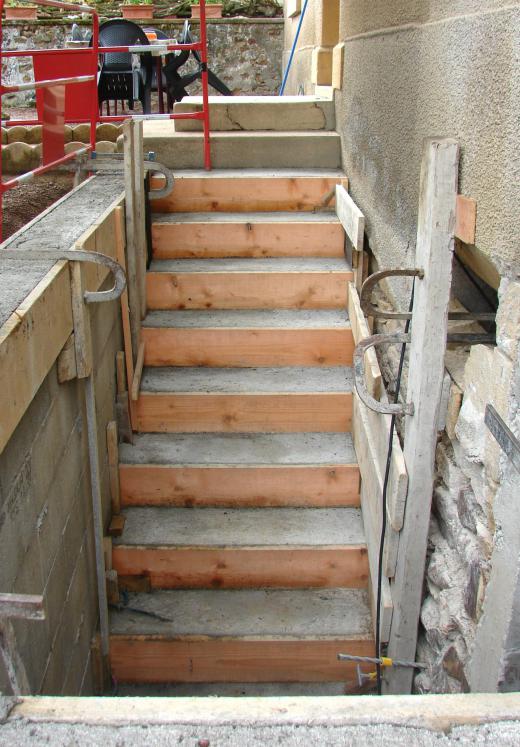Slip forming is a building technique which involves the use of forms which are “slipped” progressively as the structure grows longer, with finished molded material coming out of the bottom of the form, while new material for molding is poured into the top of the form. This technique has been used to build very large structures since the 1950s, and some of the world's most ambitious building projects have been accomplished in part with the assistance of slip forming. People can sometimes see examples of this building method in action at sites such as high rise construction sites.
In slip forming, people start by creating a mold, pouring concrete into it, working it, and then sliding the mold up as the concrete starts to set so that more concrete can be poured into it. When the structure is finished, the concrete will be seamless, because even though it was done in sections, it was done while the concrete was still highly plastic, and the sections blend seamlessly together. This technique can be used in many settings where other types of forms are not possible.

Slip forming can also be done with masonry. In slip form masonry, a mason starts the masonry inside a form and moves the form up as the top of the form is reached to add subsequent layers. The form keeps the masonry even and tidy, allowing the builder to add until the desired height is reached. One drawback to this technique with masonry is that the masonry cement can smear on the forms, necessitating careful cleaning of the masonry so that the face of the wall will be clean.
This technique is used in many settings where casting in place is desired for logistical reasons. Slip forming can be faster, cheaper, and more efficient than other building techniques. In some settings, it may be the only technique which is possible for the application. It also results in structures with a high tensile strength and integrity, which can be useful from an engineering and safety perspective. The strength created with slip forming allows engineers to push structural limits in other ways.
People can use slip forming for small projects as well as high rise buildings. It's a good idea to experiment with small practice projects before delving into a large and complex one to get used to the ins and outs of slip forming on practice materials.
Ever since she began contributing to the site several years ago, Mary has embraced the exciting challenge of being a About Mechanics researcher and writer. Mary has a liberal arts degree from Goddard College and spends her free time reading, cooking, and exploring the great outdoors.

